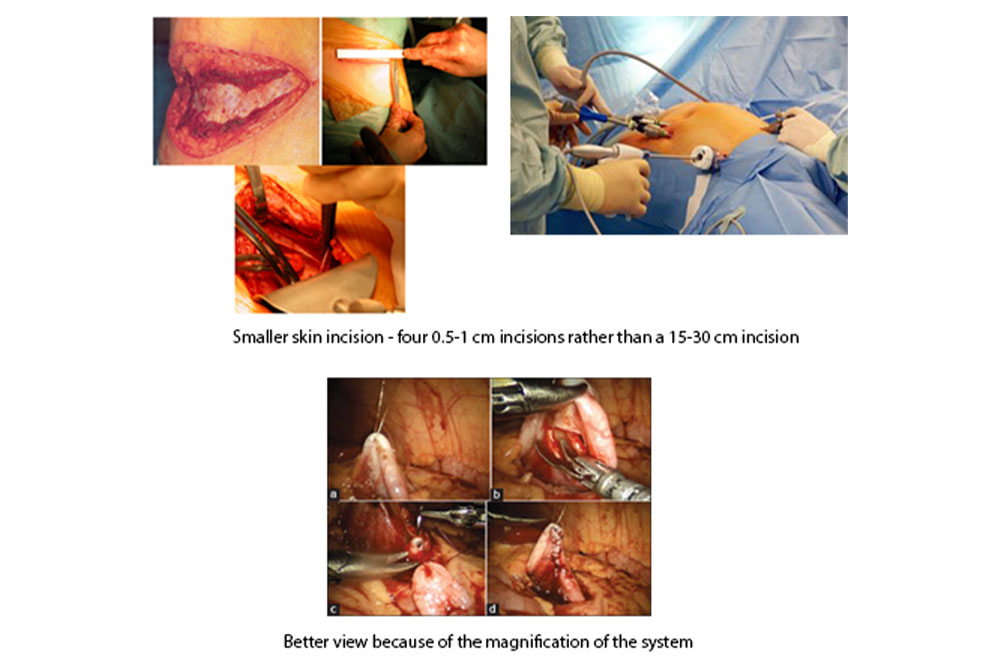(for removal of failed/infected/cancerous Kidney)
Many traditional urologic surgical procedures require large incisions with lengthy hospitalization and recovery. Laparoscopic or keyhole surgery to patients has revolutionized urologic surgery. Using a small telescope with built in magnification mechanism and a variety of long, thin surgical instruments placed, through approximately 3-5 incisions, the surgeon is able to perform minimally invasive surgery for a variety of urologic diseases and problems like adrenal tumor, Kidney cancer, bladder cancer, ureteropelvic junction obstruction, kidney stones. Patients who have undergone these procedures have enjoyed not only the same diagnostic and therapeutic benefits of traditional open surgery but also greatly reduced postoperative pain, shorter hospitalization, faster recovery, and better cosmetic results.

Specialization & Expertise
Advantages
- Smaller skin incision – four 0.5-1 cm incisions rather than a 15-30 cm incision
- Better view because of the magnification of the system
- Minimal pain
- Minimal Bleeding
- Faster recovery and healing
- Short Hospital stay and quick return to work
Disadvantages
- Increased surgical expenses because of the use of equipment/technology
- Very few surgeons in the world have experience of laparoscopic surgery of kidney because of the steep learning curve
VARIOUS TYPES OF LAPAROSCOPIC KIDNEY SURGERY PERFORMED ARE:
Laparoscopic Nephrectomy
Laparoscopic Ureterolithotomy
(for removal of large ureteric stone)
Laparoscopic Pyeloplasty
(for correcting block in kidney-urine tube junction)
